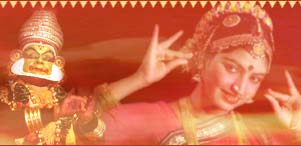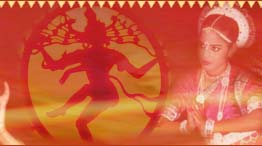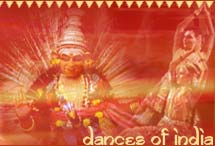Kuchipudi is a classical dance that originated in Andhra Pradesh. The name 'Kuchipudi' has been acquired from the name of a small village of Kuchelapuram near Vijayawada in Andhra Pradesh, India. In the seventh century, Kuchipudi evolved with the outcropping of Bhakti movement. The credit of existing dance form of Kuchipudi goes to Sidhendra Yogi. One of his eminent works of dance is 'Bhamakalapam'. Though Sidhendra Yogi restricted the art of dance to the young Brahmin boys of the village then, today the dance is outshined by women. Generally, the dance of Kuchipudi is commenced with certain stage rituals and following them, every participant appears on the stage introducing them with a 'daru' (a small comp of both song and dance). Daru helps in introducing the characters and sets the atmosphere of the stage show.
History and Evolution
Once there lived an orphan who was raised by the villagers and married in his early childhood. After his vedic training, he was called Sidhendra Yogi. He finished his education and was returing back to his native Srikakulam. While returning he had to cross a river. As he was crossing the river, midway he realized that he was too tired to swim further and was nearing to his death. He started praying to God to give him enough strength to swim across. Finally he could sail through but after reaching the shore he vowed to turn into a sanyasi (renunciate) and devote his life to God and His service. It was said that after this he use to teach few boys 'Natya Shahtra' and from there originated his own version of the dance that we know today as Kuchipudi. Kuchipudi flourished as a dramatic form of dance for hundreds of years. It was considered a form of high art by the rulers of Deccan India. Tana Shah in 1678 granted the lands around Kuchipudi dancers who performed and pleased him
Attire and Makeup
Usually a katcham is worn with a long pleat and border in the centre. Though similar to Bharatnatyam, there are small side fans attached to the costume that differentiates it from the former's costumes. Cross pleat costumes that are used in Bharatnatyam are also worn in Kutchipudi. However, in Kuchipudi, the katcham is worn in the back. The makeup comprises of elongating eyes and elaborate hairstyles. There are lots of flowers that are used to decorate long plait worn by the artists. The ornaments worn by the artists in a Kuchipudi performance are generally made of a light weight wood called Boorugu.
Music and Movement
The dance starts with a song that is usually Carnatic music. The song comes along with the harmony of mridangam (a classical instrument), violin, flute and tambura (an instrument with strings). Kuchipudi is famous for its swift and delicate footsteps and elegant movements. The best part of Kuchipudi dance is the breathtaking dance on the brass plate rim. With the change in time, Kuchipudi has changed in a great deal. Initially, it was intended to be a conventional dance act, crammed with religious feeling and dedication. Usually men performed Kuchipudi dance after passing through a strict training. However, in the present date, Kuchipudi dance is mostly performed by women. Kuchipudi has crossed the boundaries of India and today, even foreigners like this form of Indian Classical Dance.
Posture
Kuchipudi dance drama has a perfect blend of speech, mime and pure dance. The Kuchipudi dancer is a multifarious personality on stage that changes form with the pace of mime. Kuchipudi has imitated many of its features like 'Yakshagan' from the dance of Bharatnatyam. The dance of Kuchipudi is vivacious and dazzling, yet has the magnitude of being earnestly symphonious.
Famous Artists
One of the renowned guru of Kuchipudi form of dance was Lakshminarayan Shastry. After him, some known Kutchipudi dancers are Vempati Chinna Satyam, C.R. Acharyalu, Dr. Nataraja Ramakrishna, Uma Muralikrishna, Aparna Krovvidi and V Anjana Devi.




